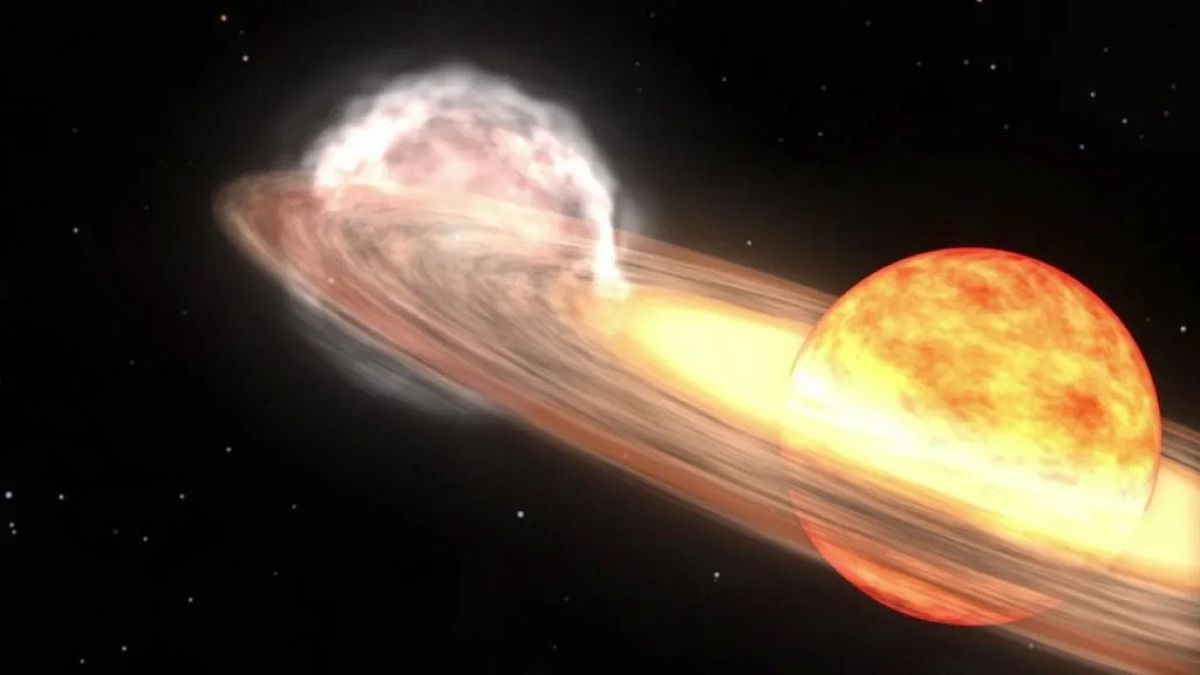Astronomers are waiting for T Coronae Borealis, a nova 3,000 light-years away, to explode for the first time in almost 80 years.
Astronomers are watching a dark spot among the stars for a once-in-a-lifetime stellar eruption that could happen any day now.
The T Coronae Borealis, known as the Blaze Star, is a two-star system 3,000 light-years away from the Earth with a white dead star that steals the pressure and heat from a nearby ancient red giant star.
This energy transfer will eventually trigger a thermonuclear explosion that happens roughly every 80 years, where the “nova” – or new star – will become visible to the naked eye for a week or two before dimming again.
The eventual explosion isn’t a supernova, or the death of a star, because the dead or dwarf star stays intact aftewards in a cycle that continues for tens or hundreds of thousands of years.
“It’s a once-in-a-lifetime event that will create a lot of new astronomers out there, giving young people a cosmic event they can observe for themselves, ask their own questions, and collect their own data,” Dr Rebekah Hounsell, an assistant research scientist specializing in nova events at NASA’s Goddard Space Flight Center, said in a NASA statement from May.
“It’ll fuel the next generation of scientists”.
A coordinated approach
In 1946, the star briefly dimmed for a few months before it erupted. In 2023, NGO the American Association of Variable Star Observers (AAVSO) announced that the Blaze Star had its dip so the explosion could happen at any time.
NASA astronomers estimated the explosion could happen by September 2024, but there’s been no record that it happened.
Euronews Next reached out to NASA about the star explosion to confirm it hasn’t taken place yet but did not receive a reply at the time of publication.
NASA’s Fermi Gamma-ray Space Telescope, which is currently in low Earth orbit, will be the one to observe when the Blaze Star eventually erupts, along with some other tools like the European Space Agency’s (ESA) INTEGRAL telescope.
Elizabeth Hays, chief of the Astroparticle Physics Laboratory at NASA Goddard, said in a statement that this coordinated approach means astronomers will be able to study star explosions like this one from several different angles.
“Typically, nova events are so faint and far away that it’s hard to clearly identify where the erupting energy is concentrated,” Hays said.
“This one will be really close, with a lot of eyes on it, studying the various wavelengths and hopefully giving us data to start unlocking the structure and specific processes involved. We can’t wait to get the full picture of what’s going on”.

